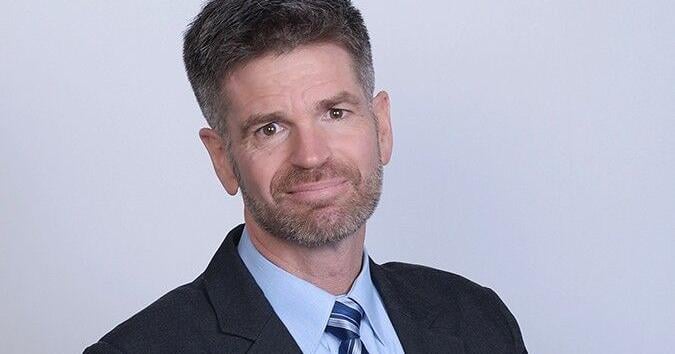Last week, Colorado Christian University (CCU) dedicated its newest facility, the 60,000-square-foot Armstrong Center. Named in honor of Bill Armstrong, CCU’s president from 2006 to 2016, the Armstrong Center will be home to the School of Music, host a new library, and house CCU’s first dedicated chapel.
Atop that chapel now sits the highest object on university grounds, a Christian cross. Perched on the peak of a high steeple, the cross is now the central focus point of all university grounds, visible from almost every outside angle. It is a constant reminder of Jesus Christ, our Lord and Savior, the tie that binds together the entire school.
While it’s not unusual to see a cross as the highest point of a Christian church or school, when considered from a disinterested perspective, it can seem strange that the world’s most notorious execution implement has become synonymous with the Christian faith.
However, the cross is not just a symbol; it represents the coalescing ideas that tie together the worldwide Christian church. In its many forms and across all epochs of church history, the cross has become the unifying object that reminds the church, called the Bride of Christ (Eph 5:25-17), of His redeeming sacrifice.
His blood was shed to cover our sins and make right our sin-fractured relationship with God. Salvation in Jesus Christ is the ultimate hope for those who follow Him. Seeing the cross so prominently displayed on our campus is a constant reminder of the price Jesus paid and the hope purchased when he was nailed to that horrid Roman instrument of death.
The cross is also a powerful link to our Christian educational heritage, established when Jesus called His first disciples. In Jesus’ didactic teaching methods, we see the models used even today by CCU instructors.
These include teaching large groups, for example, the famous Sermon on the Mount, smaller group discussions with His disciples, and intimate exchanges with individuals such as Nicodemus in John 3 and the Samaritan woman at the well one chapter later.
Although the age of electronics, the internet, and AI continues to change the methodology, the basics of good teaching remain the same as when Jesus walked the streets of Jerusalem. CCU claims John 1:17 as its foundational verse: “For the law was given through Moses; grace and truth came through Jesus Christ.” Even while on the cross, Jesus taught all of us in grace and truth.
Receive updates from our editorial staff, guest columnists, and letters from Gazette readers. Sent to your inbox 12:00 PM.
Success! Thank you for subscribing to our newsletter.
That cross was the ultimate intersectional meeting between God and humanity. It pointed directly toward theology, the study of God and His relationship with humankind. In the Middle Ages, during the adolescence of Christian education, theology was called the “queen of the sciences” and philosophy “her handmaiden.”
Theology was the cement that originally held together all academic disciplines. It provided a secure foundation for building knowledge, bringing coherence to scholarly pursuits.
After the invention of the printing press and the widespread distribution of the Bible, this theology developed into a Biblically-based worldview that eventually led to the foundation of America. Indeed, 121 out of 122 of the first colleges founded in America had Christian roots, many established by Puritans.
The Puritans spoke of the “holy triad” of the home, the church, and the school supporting each other for moral and academic outcomes. This is the theological legacy of CCU, and when we gaze upon the cross high about the university, we look back to the history of early American Christian education, which was, in nature, cooperative with home and church. This is still the common denominator at CCU.
Many American universities have lost a shared ideological purpose. The stove-piping of academic disciplines and corruption of the social sciences have been incredibly destructive to college ideology. But at schools that hold high the cross and cling to a Biblical worldview, students learn a comprehensive way to understand and impact the culture. The cross is the fundamental difference between CCU and those who long ago abandoned their Christian foundations.
High above the Armstrong Center, the cross reminds all students, faculty, and administrative staff of the common elements of a great Christian university: a belief in Jesus Christ, teachers who instruct as He did, and a Biblically-based theology that teaches a coherent worldview. This training, in turn, equips students with the confidence to serve the world in Jesus’s name and the hope found only there.
Bill Armstrong was a great man, and it’s a fitting memorial that the structure bearing his name should be holding high the cross of Jesus Christ. However, he would be the first to say, “Don’t look at me; fix your gaze high on the cross.”
David Murphy, Ph.D., is the dean of behavioral and social sciences at the College of Adult and Graduate Studies at Colorado Chrisitian University. Murphy joined the CCU team in 2021 and retired in 2014 after 25 years of Air Force service and then completing his Ph.D. in Leadership Philosophy from Dallas Baptist University.
David Murphy, Ph.D., is the dean of behavioral and social sciences at the College of Adult and Graduate Studies at Colorado Chrisitian University. Murphy joined the CCU team in 2021 and retired in 2014 after 25 years of Air Force service and then completing his Ph.D. in Leadership Philosophy from Dallas Baptist University.
Source link : http://www.bing.com/news/apiclick.aspx?ref=FexRss&aid=&tid=6709070bd948406195bba1ef6433cb25&url=https%3A%2F%2Fgazette.com%2Fopinion%2Fa-cross-tops-our-campus-new-armstrong-center-here-s-why%2Farticle_5e313d58-871c-11ef-b940-7b8167957998.html&c=6859182210805494486&mkt=en-us
Author :
Publish date : 2024-10-11 00:00:00
Copyright for syndicated content belongs to the linked Source.
